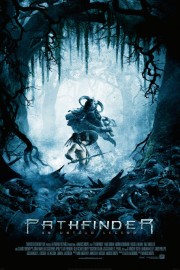Pathfinder
Marcus Nispel’s “Pathfinder” always intrigued me as a period blood-and-guts action thriller, even though I disliked his “Texas Chainsaw Massacre” remake for Michael Bay, and wasn’t very high on his 2011 “Conan the Barbarian,” although that had its moments, to be sure. His 2009 “Friday the 13th” for Bay’s Platinum Dunes production company was better than it had any reason to be, however, and my wife actually brought “Pathfinder” into our collection when we got married- what could go wrong?
Nispel is a filmmaker intrigued by fantasy images and visual allure, which was evident in the other three films he directed that I’ve seen (and especially true of “Conan”). That is ramped up to 11 in “Pathfinder,” which takes place centuries before Columbus came to the “New World.” Vikings have come to the shores of North America and are looking to conquer the Native American tribes. The main character, played by Karl Urban, is Ghost, a viking boy who is raised by the tribes who find him left behind. Though he is raised by them, he is not considered one of them, and he is seen as something of an outcast by some of the men. When the tribes must face more Norsemen to save their lands, however, Ghost becomes a key figure, and leader in the tribe, when it comes to getting them to safety.
If you’re thinking of “Avatar” or “Dances With Wolves” when it comes to that plot description, believe me, you weren’t the only one. If Nispel and his writer, Laeta Kalogridis, had a story that didn’t come wrapped in a million action-adventure cliches, it might be easier to take interest in what “Pathfinder” has to offer; unfortunately, it doesn’t have much to offer. As a presence, Urban is a solid action actor, as he previously had shown in “Lord of the Rings” (and later in “Dredd”) but here his character is a blank slate, and not terribly well-developed, although he certainly has more going for him than anyone else in the cast. I mentioned Nispel as a filmmaker who likes fantasy images and alluring visuals, but “Pathfinder” hues too far down the “dark fantasy” aesthetic to be compelling to a fan of visually-inspired movies like “300” or “Pan’s Labyrinth” (two movies that preceded this one by months when it came out in 2007). A much better comparison was another 2007 film, “Alien vs. Predator: Requiem,” which seemed to also hide a middling budget behind ugly, too-dark cinematography and production design. As a timeframe in history, this dark period in North American history would be worth a filmmaker’s effort to explore, and I think Nispel would be a good choice to do it, under different circumstances; unfortunately, “Pathfinder” is not the film to look to for how to do it.










